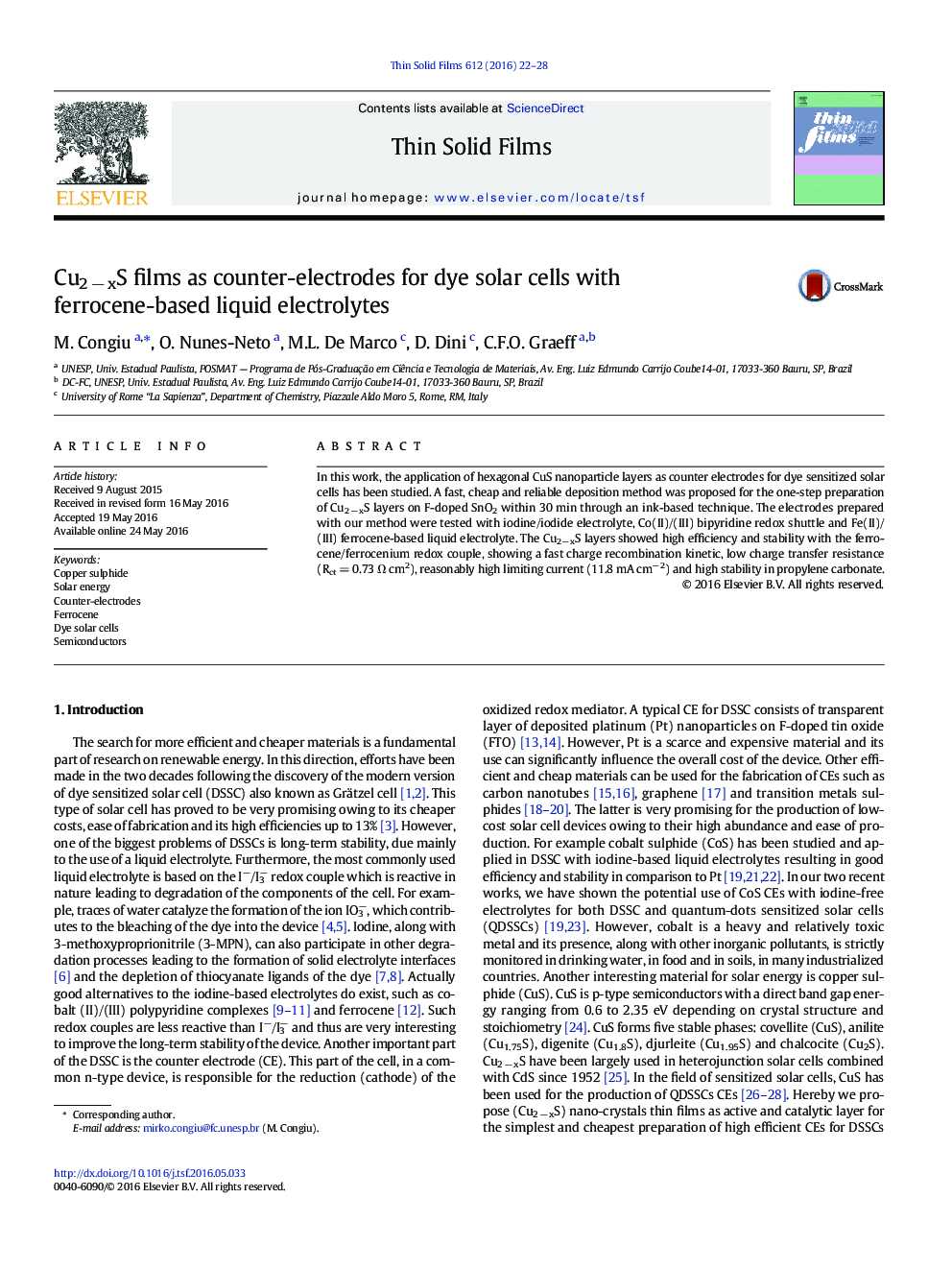| Article ID | Journal | Published Year | Pages | File Type |
|---|---|---|---|---|
| 1663925 | Thin Solid Films | 2016 | 7 Pages |
•We proposed a low-cost Cu2 − xS electrode for dye solar cells.•Easy deposition and processing•Suitable for large-area applications•Advantages and limitations of Cu2 − xS with three different redox electrolytes•High electro-catalytic efficiency and stability with the ferrocene/ferrocenium redox couple
In this work, the application of hexagonal CuS nanoparticle layers as counter electrodes for dye sensitized solar cells has been studied. A fast, cheap and reliable deposition method was proposed for the one-step preparation of Cu2 − xS layers on F-doped SnO2 within 30 min through an ink-based technique. The electrodes prepared with our method were tested with iodine/iodide electrolyte, Co(II)/(III) bipyridine redox shuttle and Fe(II)/(III) ferrocene-based liquid electrolyte. The Cu2 − xS layers showed high efficiency and stability with the ferrocene/ferrocenium redox couple, showing a fast charge recombination kinetic, low charge transfer resistance (Rct = 0.73 Ω cm2), reasonably high limiting current (11.8 mA cm− 2) and high stability in propylene carbonate.
